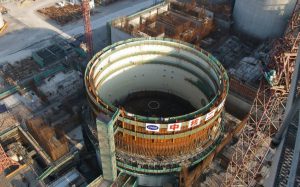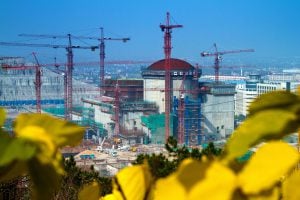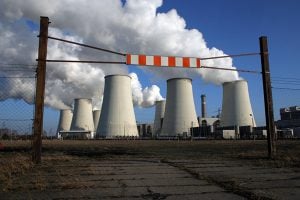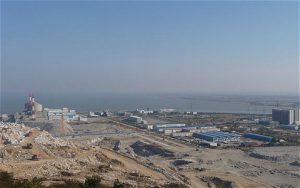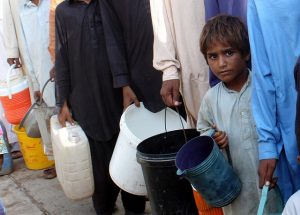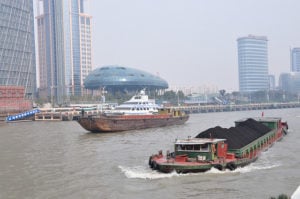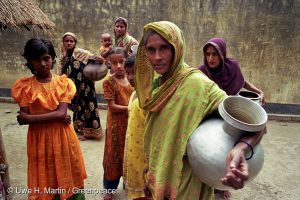The Sindh Environmental Protection Agency has
approved the construction of two large nuclear power plants close to Karachi, Pakistan’s largest city and home to some 20 million people.
This marks the third formal approval given to the project, halted on two previous occasions over safety fears and problems in the impact assessment process.
In reaching this decision, the agency has violated a law it itself created, ignored its own procedures, and failed its mission to safeguard the well-being of local citizens and the environment.
The story begins in 2008 when
Pakistan signed a deal to buy a Chinese-built nuclear power plant, to be operated by the
Pakistan Atomic Energy Commission (PAEC). With the site chosen for the reactor just outside Karachi, the commission was obligated to submit an environmental impact assessment (EIA) for the project to the Sindh Environmental Protection Agency (SEPA), which it did in 2009.
The EIA report, however, was not made public; nor was the mandatory public consultation process held. Three months later, SEPA gave its approval. The municipal government, for reasons not made public at the time, decided not to begin construction.
Seeking permission to add a second large reactor to its plans for the Karachi site, the energy commission in 2013 submitted a revised EIA. Three months later, SEPA approved the second reactor. Again, the EIA report was not made public and the public consultation process not held.
This time, however, citizens grew concerned and brought a public interest lawsuit to the Sindh High Court, which rejected the previous SEPA approvals and ordered PAEC to submit a fresh EIA; in addition,
SEPA was instructed to adhere to the legal requirement of a public consultation process and well-publicised public hearing.
In response to the court’s ruling, the commission submitted an EIA report for the Karachi reactors. At 394 pages long with 1,995 pages of appendices, it covers the site’s geology, earthquake and tsunami history, local ecology and population distribution, wind patterns, nuclear reactor safety features, and expected radioactivity releases during normal operation.
It claims no serious accident will affect these reactors for the next sixty years, and no significant risk is posed to the millions of inhabitants of Karachi living only a few tens of kilometres away.
Within days of receiving this 2,400 page report, SEPA accepted its findings, raising questions of how the agency was able to review such a lengthy and highly technical report, that covers an array of scientific disciplines, in such a short period time in a way that was comprehensive and accurate.
SEPA certainly does not have the scientific staff to assess all the claims made in the report. The document, for instance, notes “the PAEC has calculated [radiation] doses up to 80 km distance from the plant considering the worst conceivable accident.”
But the results are not included in the report. How did SEPA check these calculations? How did it make a decision that the consequences were acceptable?
How did SEPA decide the report was complete? The report, for example, makes no mention of what would happen if there was an accident involving the enormous amounts of very hot radioactive spent nuclear fuel that will be stored in water-filled ponds at the reactor site for many decades. Radioactivity released in a spent fuel accident can be much larger than an accident involving a reactor.
Avoiding public consultation
Having accepted the report, SEPA placed newspaper advertisements announcing a public review process. The advertisements invited public comments on the EIA and announced a public hearing.
The advertisements, however, were not placed in any of the major newspapers, and as a result most people in Karachi were unaware of the opportunity. To make matters worse, SEPA allowed only 15 days for the public to study the 2,400 page report.
The location of the hearing seemed to have been chosen to limit public participation. In the past, SEPA had held public environmental hearings in the city, where people could easily attend; this time, it chose to hold the public hearing at the reactor project site, a heavily guarded location controlled by the PAEC, that cannot be reached by public transport.
The hearing itself was
stage-managed by the commission, which also provided its own transport to the public hearing venue from various spots in the city.
Only a handful of Karachi citizens made it to the hearing. A request for additional hearings, to be held in the city, was denied, even though the Sindh High Court had suggested this option.
Some people submitted written comments to SEPA noting problems in the EIA. In violation of its own rules, SEPA has failed to inform them whether these comments were incorporated, and if so in what manner, or if the comments were rejected and on what grounds.
As Pakistan plans to build more nuclear reactors across the country, the challenge now will be to make SEPA and similar bodies in other provinces more accountable and effective in safeguarding the environment and public health from nuclear risks.
Karachi’s nuclear plans
• Pakistan has purchased two large nuclear reactors from the China National Nuclear Corporation, to be operated by the Pakistan Atomic Energy Commission (PAEC).
• Each reactor is projected to cost US$4.8 billion (29.79 billion yuan) and will have a capacity of 1,100 MW.
• Reactors of this design have not yet been built and operated in China, so there is no information about their safety and performance.
• The reactors are being built about 20 kilometres from Karachi, Pakistan’s most populous city, economic hub and vital port.
• Evacuating Karachi would be impossible in the event of a serious nuclear accident, whether it is from an earthquake and tsunami like at Fukushima or from operator error like at Chernobyl.
This article appeared originally on chinadialogue’s sister website thethirdpole.net and can be accessed here.
